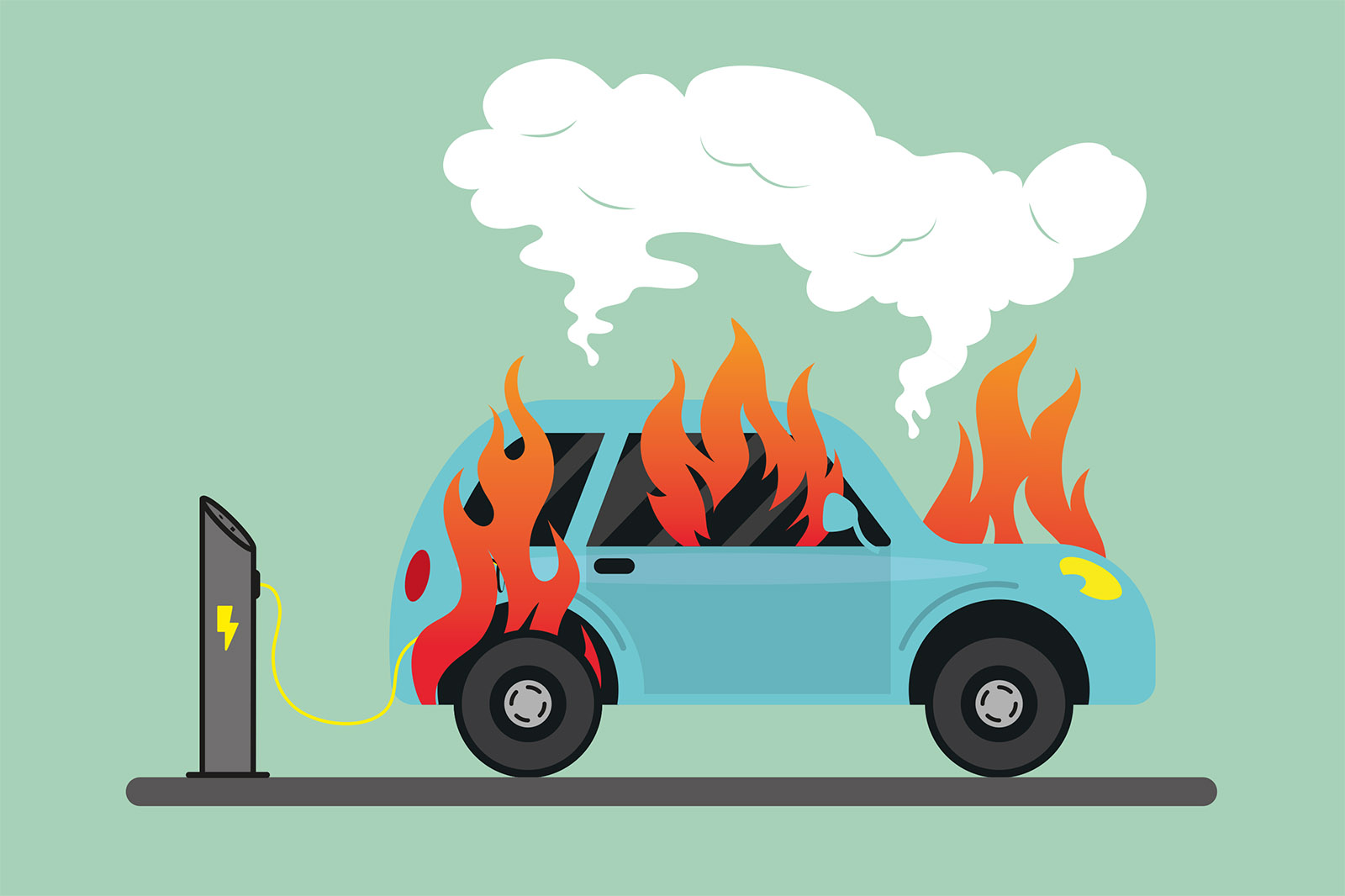Experts are divided on how best to tackle an EV fire but, generally, immense quantities of water to cool the battery pack (although this won’t prevent fire erupting again), a fire blanket to suppress the flames and breathing equipment for the firefighters to protect them from the toxic vapour cloud is the standard approach. Either that or simply let the blaze burn itself out.
Attempting to suffocate the fire with inert gases is ineffective because, being a chemical blaze, it doesn’t require oxygen. Meanwhile, the surrounding area must be checked for discarded battery cells that could have been propelled from the battery pack by an explosion and might spontaneously ignite later.
Following containment, the burnt-out EV must be removed and deposited in a compound away from buildings and other vehicles. (Some 25% of scrapyard fires are caused by spent lithium ion batteries.)
More radical steps include immersing the car in water, although not sea water, because chlorine gas could be released.
Does the fire risk mean electric cars are unsafe?
It all sounds quite alarming and a good reason not to buy an electric car, but Paul Christensen, professor of pure and applied electrochemistry at Newcastle University and senior advisor to the National Fire Chiefs Council, is keen to quell fears about EV fire safety, especially given the benefits the technology offers.
“As someone who assisted Nissan during the creation of its battery plant, I would, if I could afford one, have a Nissan Leaf tomorrow,” he says. “We don’t need to be worried about the small incidence of fires involving electric vehicles but we do need to be aware.
“A lithium ion battery stores a huge amount of energy in a very small space. Since 2008, the adoption of such batteries has outstripped our appreciation of their risks. We’re running to catch up, but we will do.”
As part of his campaign to improve EV fire risk awareness among first responders, Christensen has so far presented to 30 of the UK’s 50 fire services, as well as to fire services in Europe, Australia and New Zealand.

